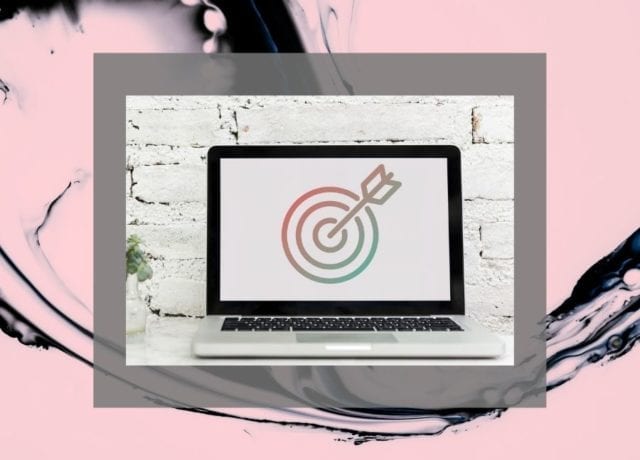At first blush, it would seem that native ads and programmatic ads would come together like oil and water.
The former answers a brand’s need to speak personally and authoritatively to its audience. The latter allows rapidly expanding brands to reach a huge demographic while still targeting interest (although targeting will be tricky without third-party cookies).
One is almost always in a natural format, while the other traditionally take the form of banner and PPC ads.
These two formats are not diametrically opposed but seem to address different needs. But as ad networks expand and programmatic capabilities advance, the line between programmatic and direct ads blurs, opening the opportunity for native ads to join the programmatic bandwagon.

What Is Native Advertising?
Native advertising is paid content that matches the look and feel of the unique environment in which they’re delivered. Native ads feel natural and aren’t jarring. Nearly every online ecosystem offers native ads, including social media and YouTube. That said, the ad format is making its way offline as advertisers look to escape the crowded online world and rising prices.
Why Are Programmatic Native Ads So Popular?
Native advertising spending increased by 37% in 2021 and is expected to reach $98.59b in 2023.
These numbers make it clear that programmatic native ads are popular.
But why are native ads on the rise, and what do they offer brands?
The short answer: They just work.
According to Outbrain, 68% of consumers trust native ads seen in an editorial context, compared to 55% for social ads. Meanwhile, native ads generate an 18% boost in purchase intent, which is music to all advertisers, especially those in DTC who rely heavily on their online presence.
The longer (but not super long) answer: People don’t mind native ads. In fact, Outbrain found that native ads are the least intrusive form of advertising.
In the past, brands have had valid concerns about programmatic ads translating into a poor fit or a risk to brand safety. YouTube has been in the headlines in the past for brand safety-related concerns.
In 2017, AT&T and Johnson & Johnson pulled ads from YouTube and Google after news reports showed their ads running next to offensive content.
In 2019, Procter & Gamble warned digital media companies that they need “a rethink of their ecosystem to build in quality, civility, transparency, privacy and control or risk major brands stepping back from advertising.”
Google’s president of EMEA business & operations, Matt Brittin, responded by saying, “In the context of brand safety, we’ve seen some of the bigger advertisers pull back spend while they understand what’s there and make sure they do the right thing. And we recommend that where they have concerns about it.
“We take the responsibility very seriously, we’re in it for the long term. Any advertiser who wants to think about what they’re doing differently, we support them in doing that.”
Google and other major advertising ecosystems have taken the responsibility seriously.
In 2021, Google became the first digital platform to receive content-level brand safety accreditation from the Media Rating Council (MRC). It received the same accreditation again in 2022, making YouTube the only platform to hold this distinction.
Similarly, Meta has gone to great lengths to address safety concerns on Facebook and Instagram by showing brands exactly where their ads appear.
But the pros are starting to outweigh the cons.
The approach offers two major benefits for advertisers: cost-effectiveness and better targeting.
Programmatic native ads are more cost-effective because they automate an otherwise time-consuming process and result in higher-converting ads. One study shows native ads have a click-through rate (CTR) 8.8x greater than display ads.
“Doing native ads programmatically means you get many of the benefits of programmatic display: automated media buying, effective targeting and audience insights for further optimization,” writes Grace Kaye at Marketing Land.
The higher conversion is often due to combining the power of contextual and native ads; users not only see highly relevant ads, but they see them next to highly relevant content.
“Programmatic adds more power to native ads by leveraging machine learning and contextual signals to customize them according to user preferences and placing them at appropriate places,” writes Vandita Grover at MarTech Advisor.
Here’s a good example of a native ad from Visit Portugal:

Why’s it a good example?
Because someone looking at flights to Portugal on Skyscanner clearly has some intention of visiting the country. Therefore, an ad from Visit Portugal makes all the sense in the world. It’s natural and highly relevant to the page.
Native ads already reached more qualified leads, particularly when placed with niche publications. With advancing ad tech, that reach can become more expansive and targeted.
Top native advertising platforms
- Outbrain: Outbrain is arguably the most established native placement platform, making 275 billion monthly recommendations and covering 80 percent of the “world’s premium publishers.”
- Nativo: Nativo offers Dynamic Creative optimization and A/B testing to ensure native ads are well-placed. Major brands — from Walmart to Disney — are using the platform.
- Taboola: The platform has agreements with MSN, Business Insider, Fox News, and many digital properties. Their goal is to make brands the next story on the page “in moments when people are looking for something new.”
Other popular native advertising platforms include TripleLift, Yahoo Gemini, and RevContent.
Native Ads: An Advertiser’s BFF
The downfall of third-party cookies and the rise of other privacy-focused initiatives have made one abundantly clear: People are tired of the current state of advertising.
That said, most people don’t dislike ads simply because. In reality, most people want to distance themselves from ads because they’re intrusive and don’t add value to their lives.
In 2023 and beyond, advertisers who can make the most natural, authentic, and meaningful connection with consumers will win (and get the most ad engagement).
Natural, authentic, and meaningful are three characteristics at the heart of native advertising.
For more insights, sign up for MediaRadar’s blog here.



